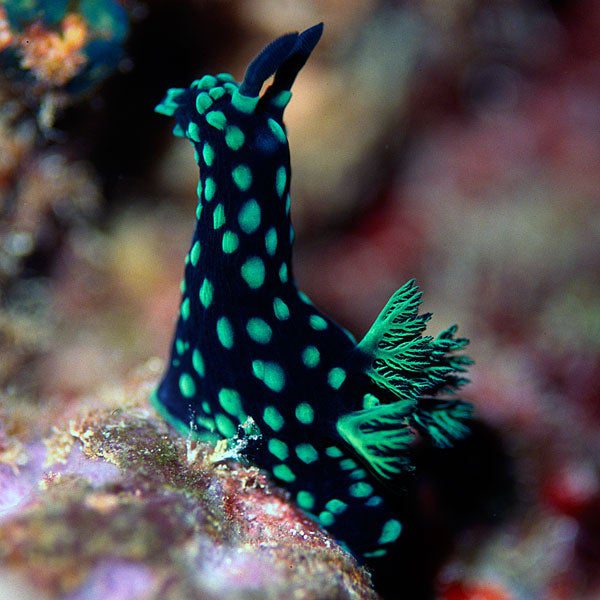The Bizarre Behavior of Sea Slugs: Nature’s Colorful Daredevils
Have you ever imagined a creature that defies conventional expectations, both in appearance and behavior? Welcome to the captivating world of sea slugs, where vibrant colors, intricate patterns, and astonishing antics take center stage. These marine gastropod mollusks, often overlooked in the vastness of the ocean, possess a peculiar charm that has fascinated marine biologists and enthusiasts alike. In this article, we’ll delve into the bizarre behavior of sea slugs, exploring their vibrant hues, remarkable adaptations, and the mysteries that surround these oceanic daredevils.
A Kaleidoscope of Colors: The Artistry of Sea Slugs
Sea slugs, also known as nudibranchs, boast an extraordinary palette of colors that rivals even the most vibrant coral reefs. Their dazzling hues serve multiple purposes, from camouflage to warning signals. Unlike their land-based relatives, sea slugs lack shells, exposing their bodies to the world. To compensate for this vulnerability, they have evolved intricate and often toxic coloration that warns predators of the potential danger of consuming them.
The striking patterns and vivid colors of sea slugs are not merely for self-defense; they also play a crucial role in communication and mating. Some species use their bright hues to signal availability or warn rivals, creating a mesmerizing underwater spectacle. Imagine a world where every twist and turn reveals a living masterpiece, a kaleidoscope of nature’s most vibrant pigments.
Survival Strategies: The Ingenious Adaptations of Sea Slugs
The lack of a protective shell might seem like a significant disadvantage, but sea slugs have devised ingenious adaptations to thrive in their marine environments. One of the most remarkable features is their ability to incorporate toxins from their prey into their own tissues, turning potential threats into potent defenses.
Some sea slugs even have the ability to photosynthesize, a trait usually associated with plants. Through a fascinating process called kleptoplasty, they “steal” chloroplasts from the algae they consume and integrate them into their own cells. This allows them to harness the power of the sun, providing an additional energy source that complements their diet.
Aerial Acrobatics: The Surprising Behaviors of Sea Slugs
Contrary to the common perception of sluggishness associated with their name, sea slugs exhibit surprising behaviors that border on the acrobatic. Some species are known for their ability to “fly” through the water column, using rhythmic contractions of their bodies to propel themselves with impressive grace. This aerial prowess not only helps them escape predators but also adds a touch of whimsy to the underwater ballet they perform.
Another fascinating behavior is the sea slug’s tendency to engage in elaborate courtship rituals. These intricate displays involve synchronized movements, tactile interactions, and the exchange of chemical signals. Witnessing these underwater dances is like observing a mysterious masquerade where each partner plays a unique role in the age-old drama of reproduction.
Unraveling Mysteries: The Enigmatic Lives of Sea Slugs
Despite the wealth of research dedicated to sea slugs, many aspects of their lives remain shrouded in mystery. The ocean depths conceal a myriad of undiscovered species, each with its own quirks and adaptations. Scientists continue to explore the complex relationships between different species of sea slugs and their environments, unveiling secrets that could inspire technological advancements and medical breakthroughs.
As we peel back the layers of the ocean’s mysteries, the enigmatic lives of sea slugs stand as a testament to the marvels that await discovery beneath the waves. These creatures, with their peculiar behaviors and vibrant appearances, remind us of the boundless wonders that exist in the deep blue realm that covers more than two-thirds of our planet.
FAQs:
Q1: Are sea slugs dangerous to humans? A1: While some sea slugs possess toxins that can be harmful, the vast majority are not dangerous to humans. It’s essential to admire them from a distance and avoid direct contact.
Q2: Can sea slugs be kept as pets in aquariums? A2: Keeping sea slugs as pets can be challenging due to their specific dietary and environmental needs. Additionally, many species have complex life cycles that are difficult to replicate in captivity.
Q3: What role do sea slugs play in the marine ecosystem? A3: Sea slugs play crucial roles in marine ecosystems as both predators and prey. They help control populations of algae and are an important part of the intricate food webs that sustain life in the ocean.

